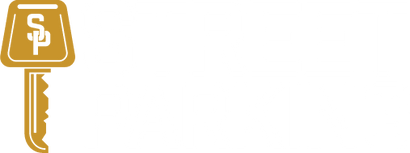
The New Year is upon us, and naturally we’re already thinking of what we want to give up and what we want to start doing in 2023.
While we don’t necessarily believe in New Year's resolutions, we do believe in personal growth.
And let's make it VERY clear: There is absolutely nothing wrong with trying to improve certain areas of our life.
This is a very natural feeling that all of us experience. And, honestly, it is a good thing—but how we channel ourselves during this time can be a make-or-break to creating new habits.
Here are 5 tips we recommend when it comes to setting goals and creating new habits in 2023:
Identify WHO you would like to become (not just WHAT you want to do) and WHY?
Habit change requires identity change. If who you are right now is someone who is inconsistent with fitness, struggles with eating out too often, and doesn’t prioritize sleep, WHAT you want to do could be:
- Work out 4 days per week
- Take lunch to work
- Go to bed by 10 p.m.
That’s as far as most people take it.
Instead, we encourage you to identify WHO you want to become and act accordingly, and then your goals can be built around that.
You might instead say:
In 2023 I want to become the type of person who prioritizes their health.
We also encourage you to choose a WHY that is deeper than just aesthetics, and definitely more than “it’s what I should be doing.”
Your WHY might look something like this:
I want to become the type of person who prioritizes their health. This is important to me because I want to have the energy needed to engage with and play with my young children or grandchildren.
Or
I want to become the type of person who prioritizes their health. This is important to me so that I can enjoy the type of lifestyle that makes me happy. I want to be able to spontaneously go for a hike on vacation, learn to surf, or play a pickup game of basketball with my friends.
It might be about how taking care of yourself improves your mental health, makes you better at your job, or gives you a sense of pride.
Then when making decisions daily, you simply ask, “What would that version of me do?” and you will quickly know the answer. At that point, your success isn’t so binary and is more about whether or not you are embodying this new version of yourself.
Start small. This might be one of the most important steps to creating a new habit.
What we mean by starting small is doing what you can handle, what is realistic, and what is manageable for YOU.
It's been proven that trying to change too many things at once is less effective than choosing 1-3 things and doing it really well.
Often we feel that in order for something to work, it needs to be overly impactful and groundbreaking. In reality, it should be so simple that it almost seems “too easy.”
So what is an example of starting small?
Example:
Habit: Eat more vegetables.
If you're someone who wants to start eating more vegetables and you currently eat none, it would be more appropriate to set a goal of eating one serving per day than to set a goal of eating four servings per day.
One serving per day may seem simple—but if you want your new habit to work, it should be simple. Not necessarily easy, but simple.If you start by trying to eat four servings of vegetables per day, it is likely that you will quickly come to a place of feeling overwhelmed. You might start missing a day here or there, and soon enough you feel like a failure, leading you to give up completely.
Now, this isn’t to say you couldn’t work up to eating four servings of vegetables per day—but start small. Once you have mastered one serving, try adding a second. When two servings a day is no problem, try adding a third.
Success breeds motivation. Choosing a habit you aren’t currently doing but are confident you CAN achieve is more likely to bring about long-term consistency. As you become successful and form habits, you can slowly increase the difficulty.
As we set out to accomplish something new, it’s important to be realistic about the challenges and obstacles we most likely will face.
The reality is, there will be obstacles. The more we become aware of this and accept it, the greater our chances are of overcoming it.
One of the best ways for overcoming obstacles is to utilize the “If-Then Planning technique” by Coach Molly.
This allows you to mentally prepare for how you will still accomplish your goal as things come up.
If-Then Planning works like this:
You decide in advance when and where you will take specific actions to reach your goal and then create the statement: If X happens, then I will do Y. "IF THIS" becomes the trigger which spurs the "THEN THAT" action. This forces you to consider the unpredictable circumstances that come up in the mess of life.
Essentially, If-Then Planning is a tool that minimizes decision-making and helps you work through any obstacles that come between you and your objectives. It also allows you to have fewer excuses for doing nothing and more options for sticking to your goals.
Example from Coach Molly:
The other day I was flying solo with my kids, and I knew getting in a workout would be tough.
I told myself, “IF I can't do the workout in the morning before the kids get up, THEN I will do it at Indy's nap time with Max.” Well, sure enough, it didn't happen in the morning because of early wakeups, but because I had already planned for what might come up, I didn't have to think twice about when I would do it. Creating a backup plan eliminated unnecessary decision-making, which helped me maintain my endurance session habit even though obstacles came up.
You can use the If-Then Planning for all areas of your life: fitness, nutrition, work, kids, cleaning, etc.
Remember: MORE THAN NOTHING is better than not doing anything at all. Sometimes “If-Then” might look like IF I don’t work out in the morning, THEN I will do it during naptime, AND IF they don’t nap, THEN I will do a more than nothing workout in the living room while they play.
Our environment plays a HUGE role in our decision-making process.
All day long we are faced with different decisions, starting from the moment we get out of bed. At the same time, everything around you is influencing your behavior in a specific direction.
Essentially our environment dictates what we do instead of what wewant to do.
Changing your environment makes it easier to do what’s right or what’s in line with the goals you have set without thinking about staying motivated. If you set up your surroundings so that making the best decisions comes easily, you set yourself up to practice better habits.
Examples:
Habit goal: Decrease mindless snacking.
- Move the foods you typically snack on to a location away from the place where you store your staples. Perhaps this spot is a bit higher and/or out of reach.
- Skip buying your mindless snack foods so they aren’t in your house.
Habit goal:Increase overall water intake.
- Place a glass of water by your nightstand before bed so you start your day with a glass of water when you wake up.
- Habit stack by drinking a glass of water while you make your morning coffee or tea.
These small changes to your environment might seem insignificant, but having a better option within reach makes it the default choice.
Control your environment before it controls you.
Finding a way to create actionable accountability with a new habit/goal is an important step in making it come to life.
A system of accountability naturally generates a positive pressure that keeps us moving forward.
Essentially we’re bringing a new habit to life and creating follow-through for ourselves. If we don’t create a plan for accountability, our habits and goals won’t take root and grow.
We encourage everyone to find at least one way that they will hold themselves accountable.
Ways that you can hold yourself accountable include…
- An accountability partner or group.
- An individual or a group that is doing this habit/goal alongside you and will routinely check in.
- Share your plan with someone in your bubble.
- Voice your plan to a best friend, coach, or family member. This should be someone who you know is going to check in often and ask you how it's going.
- Share on social media.
- Share on social media about your progress, the ways you're putting in the work, and your process.
- Visible tracker or logging platform.
- Create a way for you to routinely log and track your progress.
- Join the Street Parking Control Your Fitness Challenge.
- This is a challenge we are running from January 16th–February 19th. The goal for this challenge will be tobuild consistency in simple, foundational habits with actionable ways that you can hold yourself accountable, giving you the confidence you need to keep going!
Accountability requires honesty. It should scare you just enough that it gives you a positive push.
Often when we set out to accomplish something, we focus too much on our results and progress while not considering the systems we used to get there.
The problem with focusing solely on our results is that it's short-lived.
Once you’ve reached your goal, then what? Did you create solid systems that you can rely on, or did you go so extreme that you're burnt out and back to your old ways?
The point of creating a new habit is so that it can stick, so that it becomes a part of your everyday life and you don’t end up back at square one trying to figure out another solution.
Ask yourself: How will I successfully implement this new habit into my everyday life and make it last forever?
A great place to start is using the Habit Stacking technique.
What is Habit Stacking?
Habit Stacking starts with identifying a current habit you already do and then pairing your new habit with your current habit.
Examples:
- I have a goal to increase my daily water intake. Therefore, before I drink my morning coffee, I have a glass of water.
- I have a goal to lose weight, therefore I need to be planning ahead when it comes to meal preparation (a habit that supports my overall goal.) Since I already cook dinner each night, I will use that time to also make 2-3 lunches for the week by making more food. I will pack it and have it ready to grab and go for the following day.
Habit Stacking can be applied to any new habit. It should be SIMPLE and easily actionable.
Take away the daily decisions as much as possible. One way to do this is by making the habit you are trying to build your default setting.
For example, instead of deciding in advance which days you will work out during the week, you actively decide which days you won't. The default setting is that you work out every day unless you have actively decided to rest. This little switch in how you frame things can make a huge difference.
Avoid trying to overhaul your life, and instead focus solely on getting one percent better each day. That one percent will add up over time, and soon you will have built solid habits that will last.
Finally, as they say, “Failure isn’t falling down, it’s staying down.”
In other words, don’t expect perfection. Each day has endless opportunities for you to make the best decision you can at the moment. Some days you will nail it, some days it will feel extremely difficult, and some days you will mess up. When that happens, try not to attach any emotion to it. Instead, assess why it happened and move on.
And remember this: there is no end date! Each day is another chance to become stronger, more resilient, and closer to the person you are hoping to become.








